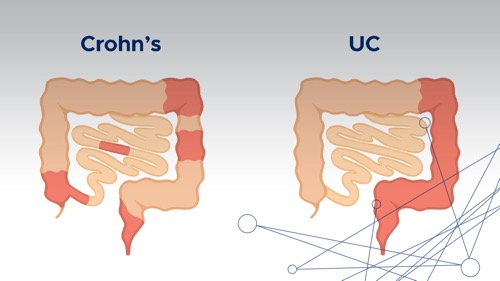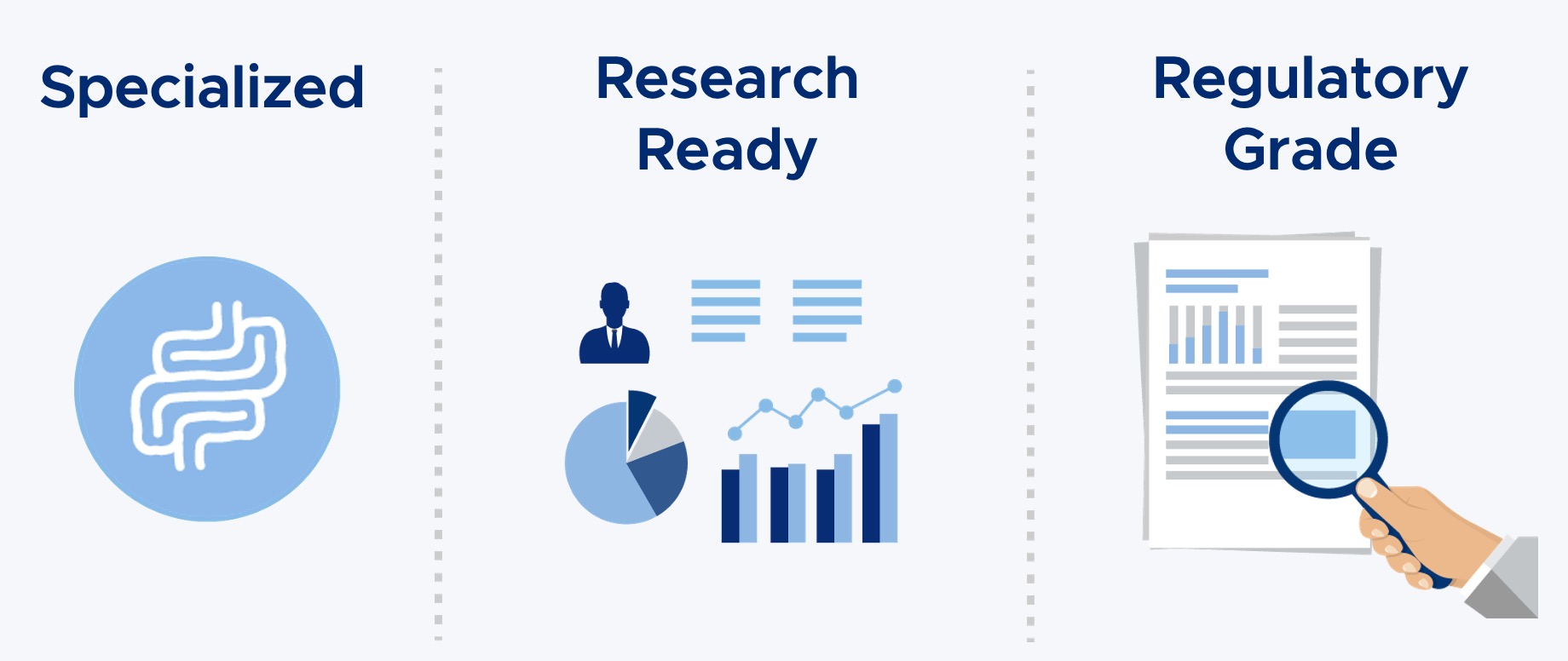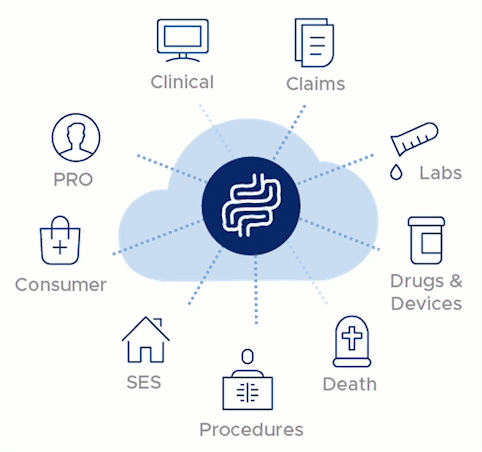Gastroenterology

Addressing gaps in care and insights
Gastroenterology disorders affect up to 11% of the U.S. population. Inflammatory Bowel Diseases (IBD), such as crohn’s disease and ulcerative colitis, are lifelong conditions that cause chronic inflammation in the intestines, leading to pain and swelling in patients.
From evidence to insights

USE CASE
Assessing the impact of changes in the management of Ulcerative Colitis patients who have an incomplete response to TNFa Therapy
Lack of treatment options resulted in UC patients left on TNFa with dose intensification, adjunct steroids or other therapy combinations despite failing to achieve remission. How has the approval of novel therapies changed practice and patient outcomes?
LEARN MORE
USE CASE
Leveraging Observed and Calculated CDAI Scores in Patients with Crohn’s Disease to Understand Response to Therapy
The Crohn’s Disease Activity Index (CDAI) is used in clinical practice and randomized control trials (RCTs) to assess the patient’s clinical status, to select appropriate therapies, and to assess the response to treatments. Despite the value of the CDAI score, it is not frequently assessed in clinical setting.
LEARN MORE
Award-Winning Research Team
Our team of award-winning researchers have authored hundreds of publications, including scientific posters, articles in peer-reviewed journals, white papers, and books.






